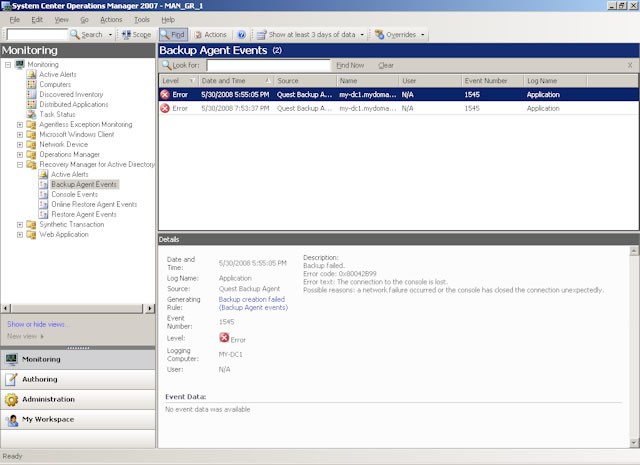Active Management Is It Working For You
Post on: 8 Апрель, 2015 No Comment

William F. Sharpe
Reprinted with permission from The Financial Analysts’ Journal Vol. 47, No. 1, January/February 1991. pp. 7-9
Today’s fad is index funds that track the Standard and Poor’s 500. True, the average soundly beat most stock funds over the past decade. But is this an eternal truth or a transitory one?
In small stocks, especially, you’re probably better off with an active manager than buying the market.
The case for passive management rests only on complex and unrealistic theories of equilibrium in capital markets.
Any graduate of the ___ Business School should be able to beat an index fund over the course of a market cycle.
Statements such as these are made with alarming frequency by investment professionals 1. In some cases, subtle and sophisticated reasoning may be involved. More often (alas), the conclusions can only be justified by assuming that the laws of arithmetic have been suspended for the convenience of those who choose to pursue careers as active managers.
If active and passive management styles are defined in sensible ways, it must be the case that
(1) before costs, the return on the average actively managed dollar will equal the return on the average passively managed dollar and
(2) after costs, the return on the average actively managed dollar will be less than the return on the average passively managed dollar
These assertions will hold for any time period. Moreover, they depend only on the laws of addition, subtraction, multiplication and division. Nothing else is required.
Of course, certain definitions of the key terms are necessary. First a market must be selected — the stocks in the S&P 500, for example, or a set of small stocks. Then each investor who holds securities from the market must be classified as either active or passive .
A passive investor always holds every security from the market, with each represented in the same manner as in the market. Thus if security X represents 3 per cent of the value of the securities in the market, a passive investor’s portfolio will have 3 per cent of its value invested in X. Equivalently, a passive manager will hold the same percentage of the total outstanding amount of each security in the market 2.
An active investor is one who is not passive. His or her portfolio will differ from that of the passive managers at some or all times. Because active managers usually act on perceptions of mispricing, and because such misperceptions change relatively frequently, such managers tend to trade fairly frequently — hence the term active.
Over any specified time period, the market return will be a weighted average of the returns on the securities within the market, using beginning market values as weights 3. Each passive manager will obtain precisely the market return, before costs 4. From this, it follows (as the night from the day) that the return on the average actively managed dollar must equal the market return. Why? Because the market return must equal a weighted average of the returns on the passive and active segments of the market. If the first two returns are the same, the third must be also.
This proves assertion number 1. Note that only simple principles of arithmetic were used in the process. To be sure, we have seriously belabored the obvious, but the ubiquity of statements such as those quoted earlier suggests that such labor is not in vain.
To prove assertion number 2, we need only rely on the fact that the costs of actively managing a given number of dollars will exceed those of passive management. Active managers must pay for more research and must pay more for trading. Security analysis (e.g. the graduates of prestigious business schools) must eat, and so must brokers, traders, specialists and other market-makers.
Because active and passive returns are equal before cost, and because active managers bear greater costs, it follows that the after-cost return from active management must be lower than that from passive management.
This proves assertion number 2. Once again, the proof is embarrassingly simple and uses only the most rudimentary notions of simple arithmetic.
Enough (lower) mathematics. Let’s turn to the practical issues.
Why do sensible investment professionals continue to make statements that seemingly fly in the face of the simple and obvious relations we have described? How can presented evidence show active managers beating the market or the index or passive managers? Three reasons stand out 5 .
First, the passive managers in question may not be truly passive (i.e. conform to our definition of the term). Some index fund managers sample the market of choice, rather than hold all the securities in market proportions. Some may even charge high enough fees to bring their total costs to equal or exceed those of active managers.
Second, active managers may not fully represent the non-passive component of the market in question. For example, the set of active managers may exclude some active holders of securities within the market (e.g. individual investors). Many empirical analyses consider only professional or institutional active managers. It is, of course, possible for the average professionally or institutionally actively managed dollar to outperform the average passively managed dollar, after cost. For this to take place, however, the non-institutional, individual investors must be foolish enough to pay the added costs of the institutions’ active management via inferior performance. Another example arises when the active managers hold securities from outside the market in question. For example, returns on equity mutual funds with cash holdings are often compared with returns on an all-equity index or index fund. In such comparisons, the funds are generally beaten badly by the index in up markets, but sometimes exceed index performance in down markets. Yet another example arises when the set of active mangers excludes those who have gone out of business during the period in question. Because such managers are likely to have experienced especially poor returns, the resulting survivorship bias will tend to produce results that are better than those obtained by the average actively managed dollar.

Third, and possibly most important in practice, the summary statistics for active managers may not truly represent the performance of the average actively managed dollar. To compute the latter, each manager’s return should be weighted by the dollars he or she has under management at the beginning of the period. Some comparisons use a simple average of the performance of all managers (large and small); others use the performance of the median active manager. While the results of this kind of comparison are, in principle, unpredictable, certain empirical regularities persist. Perhaps most important, equity fund managers with smaller amounts of money tend to favor stocks with smaller outstanding values. Thus, de facto. an equally weighted average of active manager returns has a bias toward smaller-capitalization stocks vis-a-vis the market as a whole. As a result, the average active manager tends to be beaten badly in periods when small-capitalization stocks underperform large-capitalization stocks, but may exceed the market’s performance in periods when small-capitalization stocks do well. In both cases, of course, the average actively managed dollar will underperform the market, net of costs.
To repeat: Properly measured, the average actively managed dollar must underperform the average passively managed dollar, net of costs. Empirical analyses that appear to refute this principle are guilty of improper measurement.
This need not be taken as a counsel of despair. It is perfectly possible for some active managers to beat their passive brethren, even after costs. Such managers must, of course, manage a minority share of the actively managed dollars within the market in question. It is also possible for an investor (such as a pension fund) to choose a set of active managers that, collectively, provides a total return better than that of a passive alternative, even after costs. Not all the managers in the set have to beat their passive counterparts, only those managing a majority of the investor’s actively managed funds.
An important corollary is the importance of appropriate performance measurement. Peer group comparisons are dangerous. Because the capitalization-weighted average performance of active managers will be inferior to that of a passive alternative, the former constitutes a poor measure for decision-making purposes. And because most peer-group averages are not capitalization-weighted, they are subject to additional biases. Moreover, investing equal amounts with many managers is not a practical alternative. Nor, a fortior i, is investing with the median manager (whose identity is not even known in advance).
The best way to measure a manager’s performance is to compare his or her return with that of a comparable passive alternative. The latter — often termed a benchmark or normal portfolio — should be a feasible alternative identified in advance of the period over which performance is measured. Only when this type of measurement is in place can an active manager (or one who hires active managers) know whether he or she is in the minority of those who have beaten viable passive alternatives.
Footnotes
1. The first two quotations can be found in the September 3, 1990 issue of Forbes .
2. When computing such amounts, cross-holdings within the market should be netted out.
3. Events such as mergers, new listings and reinvestment of dividends that take place during the period require more complex calculations but do not affect the basic principles stated here. To keep things simple, we ignore them.
4. We assume here that passive managers purchase their securities before the beginning of the period in question and do not sell them until after the period ends. When passive managers do buy or sell, they may have to trade with active managers, because of the active managers’ willingness to provide desired liquidity (at a price).
5. There are others, such as differential treatment of dividend reinvestment, mergers and acquisitions, but they are typically of less importance.














